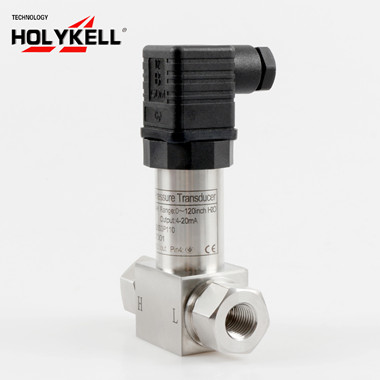The working principle of differential pressure transmitter
In the evolving landscape of technology, the significance of selecting the most suitable differential pressure transmitter continues to grow. While factors like brand reputation, measuring media, and environmental considerations often guide our purchase decisions, it is essential not to let these be the sole determining factors. A profound understanding of the working principle of a differential pressure sensor is key to ensuring the acquisition of the most fitting differential pressure transmitter.
How Does a Differential Pressure Transmitter Work?
The design of a differential pressure transmitter revolves around the principle of differential capacitance. Within this design, the sensing element comprises a taut metal diaphragm positioned equidistantly between two stationary metal surfaces, forming three plates for a complementary pair of capacitors. An electrically insulating fill fluid, typically a liquid silicone compound, serves a dual purpose: transferring motion from isolating diaphragms to the sensing diaphragm and acting as an effective dielectric for the capacitors.

When there is a pressure difference across the cell, the diaphragm flexes in the direction of least pressure. The sensing diaphragm, engineered as a precision-manufactured spring element, ensures that its displacement corresponds predictably to the applied force. The diaphragm, serving as one plate of two capacitors, facilitates a convenient method for measuring displacement. As capacitance between conductors is inversely proportional to the distance separating them, the capacitance on the low-pressure side increases while that on the high-pressure side decreases.
Choosing the Right Differential Pressure Transmitter: A Recommendation
For those exploring differential pressure transmitters, the compact type offered by Holykell stands out. This transmitter is adept at measuring the differential pressure of liquids or gases and finds applications across a wide range of general and industrial purposes. Notable for its excellent linearity and performance over temperature, this transmitter boasts a long, reliable service life coupled with exceptional long-term stability. Customers have the flexibility to choose from multiple accuracy levels, outputs, pressure ports, electrical terminations, and pressure ranges.
In conclusion, to make an informed decision when investing in a differential pressure transmitter, one should delve into the intricacies of its working principle. This knowledge empowers users to select a transmitter that aligns seamlessly with their specific needs. For those seeking a reliable solution, the Holykell compact type Differential Pressure Transmitter emerges as a commendable choice, offering versatility and performance across diverse applications
Related Posts
1. Differential Pressure Sensor for Leakage Detection
2. Troubleshooting of Differential Pressure Transmitters
3. Maintenance Notices of Differential Pressure Transmitters
4. How Differential Pressure Transducers Used in Filter Monitoring?





